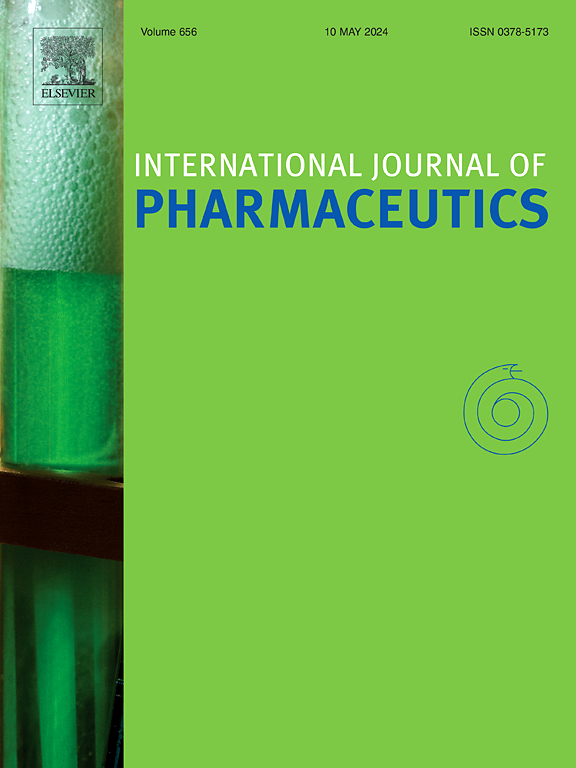Gastroretentive fibrous dosage forms for prolonged delivery of sparingly-soluble tyrosine kinase inhibitors. Part 3: Theoretical models of drug concentration in blood
IF 5.3
2区 医学
Q1 PHARMACOLOGY & PHARMACY
引用次数: 0
Abstract
In this part, drug concentration in blood after ingesting gastroretentive fibrous and immediate-release particulate dosage forms is modeled. The tyrosine kinase inhibitor nilotinib, which is slightly soluble in low-pH gastric fluid but practically insoluble in pH-neutral intestinal fluid is used as drug. The models suggest that upon ingestion, the fibrous dosage form expands, is retained in the stomach for prolonged time, and releases drug into the gastric fluid at a constant rate. The released drug molecules flow into the duodenum with the gastric fluid, and are absorbed by the blood. The drug is eliminated from the blood by the liver at a rate proportional to its concentration. Thus, as the drug concentration in blood increases due to absorption, the elimination rate increases, too, and will eventually be the same as the absorption rate, so that the drug concentration in blood plateaus out. After the gastric residence time, drug absorption stops, and the drug concentration in blood drops to zero. By contrast, after administering the immediate-release particulate dosage form the drug particles are swept out of the stomach rapidly, and drug absorption stops much earlier. The drug concentration in blood rises and falls without attaining steady state. The gastroretentive fibrous dosage forms enable a constant drug concentration in blood for drugs that are insoluble in intestinal fluids.

用于延长稀溶性酪氨酸激酶抑制剂给药时间的胃肠保留纤维剂型。第 3 部分:血液中药物浓度的理论模型。
本部分模拟了摄入缓释胃复安纤维剂型和速释颗粒剂型后血液中的药物浓度。以酪氨酸激酶抑制剂尼罗替尼为药物,该药物在低pH值胃液中微溶,但在pH值中性的肠液中几乎不溶。模型表明,在摄入药物后,纤维状剂型会膨胀,在胃中滞留较长时间,并以恒定的速度将药物释放到胃液中。释放出的药物分子随胃液流入十二指肠,并被血液吸收。肝脏以与其浓度成正比的速度将药物从血液中排出。最终,消除率和吸收率相等,血液中的药物浓度趋于稳定。在胃停留时间过后,药物吸收停止,血液中的药物浓度降至零。相比之下,服用速释微粒剂型后,药物微粒会迅速从胃中排出,药物吸收会更早停止。血液中的药物浓度时高时低,没有达到稳定状态。对于不溶于肠液的药物,胃保留纤维剂型可使血液中的药物浓度保持稳定。
本文章由计算机程序翻译,如有差异,请以英文原文为准。
求助全文
约1分钟内获得全文
求助全文
来源期刊
CiteScore
10.70
自引率
8.60%
发文量
951
审稿时长
72 days
期刊介绍:
The International Journal of Pharmaceutics is the third most cited journal in the "Pharmacy & Pharmacology" category out of 366 journals, being the true home for pharmaceutical scientists concerned with the physical, chemical and biological properties of devices and delivery systems for drugs, vaccines and biologicals, including their design, manufacture and evaluation. This includes evaluation of the properties of drugs, excipients such as surfactants and polymers and novel materials. The journal has special sections on pharmaceutical nanotechnology and personalized medicines, and publishes research papers, reviews, commentaries and letters to the editor as well as special issues.

 求助内容:
求助内容: 应助结果提醒方式:
应助结果提醒方式:


